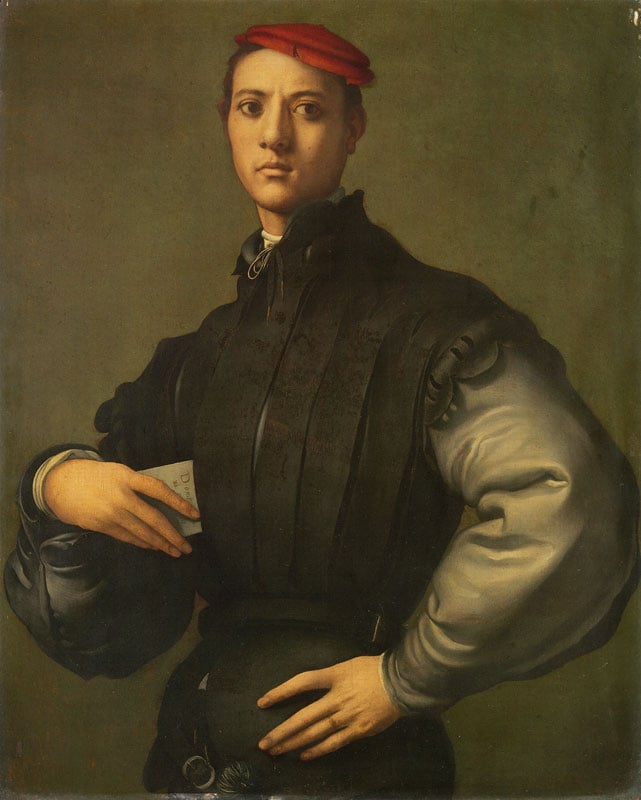
Today, a prized Mannerist painting that was lost for 200 years goes on view at the J. Paul Getty Museum in Los Angeles in a small but powerful showcase of the Italian artist Jacopo Pontormo’s work.
But if the Brits had their way, the picture would have never crossed the Atlantic.
Portrait of a Young Man in a Red Cap (1530), from the collection of billionaire investor J. Tomilson Hill, is at the center of a protracted battle between the collector and UK institutions that has pitted American money against British cultural heritage.
For now, things are at a standstill. Although Hill formally owns the painting, the British government has granted only a temporary export license, which means that the picture must return to the UK after the Getty exhibition closes. According to the Guardian, Hill cannot apply for a permanent export license until 2027.
Hill, the Getty, and the UK’s Department for Culture all declined to offer details on the painting’s future, when the current license was granted, or when the show, titled “Pontormo: Miraculous Encounters,” was organized.
Jacopo da Pontormo, Visitation (1528–1529). Photo by Antonio Quattrone.
A Long and Familiar Battle
The painting was first rediscovered in the collection of Nicholas Alexander, the Earl of Caledon, in 2008, after which he arranged a long-term loan to the National Gallery in London. Part of the agreement was that, should he decide to sell, he would alert the museum. But in 2015, he furtively sold the work to Hill for just over £30 million, or about $44.7 million,
That December, in an attempt to keep the painting in the UK, the country’s Department for Culture, Media & Sport placed a temporary export ban on the work, hoping that the National Gallery could raise the necessary funds to purchase it.
Nearly a year later, after the ban was extended several times, the museum finally secured £30 million—but post-Brexit, that was only worth $36.5 million, which Hill said was no longer enough.
Stephen Deuchar, director of the UK’s Art Fund, which helped in the fundraising effort, called the result “a great cultural loss to the nation” in a statement, adding: “We believe the UK’s art export control system should serve our public collections more effectively than at present.”
Parmigianino, Virgin and Child With Saint Mary Magdalene and the Infant Saint John the Baptist. Courtesy of the Department for Culture, Media & Sport.
The Getty is no stranger to the intricacies of British law. In September 2016, the museum announced plans to buy Parmigianino’s Virgin and Child With Saint Mary Magdalene and the Infant Saint John the Baptist following a temporary loan of the work to the museum.
The following February, the UK issued an export ban, giving the nation’s museums until June 9 to match the £24.5 million ($30.5 million) purchase price and keep the painting in the UK, where it had resigned for almost 250 years. But when the effort failed, the Getty took possession of the picture.
At all three of the current Pontormo exhibition’s venues, Portrait of a Young Man plays second fiddle to the artist’s jewel-toned Visitation, a large-scale, recently restored altarpiece of pregnant cousins Mary and Elizabeth embracing.
But Portrait of a Young Man is a masterpiece in its own right, painted as Florence was under siege by an army attempting to restore the Medici rulers who had recently been ousted.
The young man in the red cap is said to be a young aristocrat named Carlo Neri, a volunteer fighting for the republic of Florence. Despite the chaos around him—the Medicis would retake the city in 1531, after thousands of Florentines died of starvation and disease—he wears a ring and clutches a letter, signs of his betrothal.
Visitors to the Getty can see the painting for themselves to decide whether or not they think all the fuss is worth it.
“Pontormo: Miraculous Encounters” is on view at the J. Paul Getty Museum, Getty Center, 1200 Getty Center Drive, Los Angeles, California, February 5–April 28, 2019.